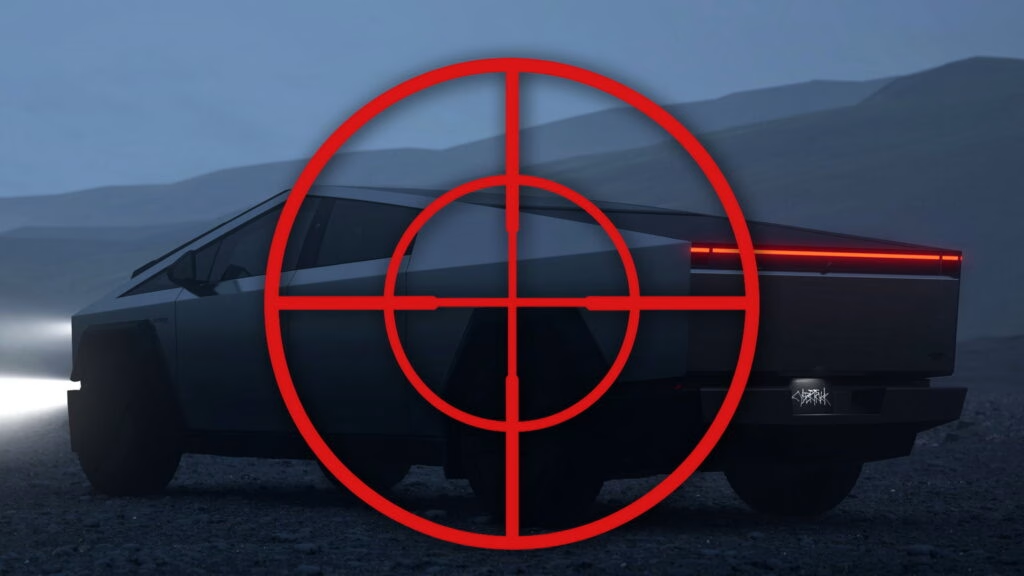Why Is the U.S. Air Force Targeting Tesla Cybertrucks for Missile Tests?
If you’ve ever wondered what happens when cutting-edge consumer tech collides with military strategy, here’s a plot twist: the U.S. Air Force is buying not one, but two Tesla Cybertrucks—and not for joyrides. Instead, these futuristic pickups are destined for the White Sands Missile Range in New Mexico, where they’ll serve as live missile test targets. Sounds wild? There’s a method to the madness.
What Makes the Cybertruck a Unique Threat on the Battlefield?
The Cybertruck isn’t just another pickup. Its unpainted stainless steel exoskeleton, angular design, and 48-volt electrical system set it apart from anything else on or off the road. According to recently surfaced military documents, these features could make the Cybertruck behave very differently under missile impact compared to conventional vehicles. The Air Force wants to know exactly how.
But there’s more to it than curiosity. Officials warn that future adversaries could weaponize Cybertrucks in active combat zones. The concern isn’t theoretical—a Chechen warlord reportedly mounted a machine gun in the bed of his Cybertruck and discussed using it in the Ukraine conflict. With deliveries expanding to regions like the UAE, Saudi Arabia, and Qatar, the possibility of Cybertrucks appearing in global hotspots is no longer far-fetched.
How Could the Cybertruck Change Modern Warfare?
Let’s be honest: most vehicles on the battlefield are designed with some level of armor, but the Cybertruck’s stainless steel shell is a different beast. Early reports and owner anecdotes suggest it shrugs off damage that would cripple ordinary trucks. The Air Force’s own documents note that Cybertrucks “have been found not to receive the normal extent of damage expected upon major impact.” That’s a big deal.
Imagine a scenario where enemy forces use Cybertrucks as mobile weapons platforms or armored transports. Standard anti-vehicle munitions might not work as expected. If the U.S. military doesn’t understand how to neutralize these vehicles, it could face nasty surprises in the field. That’s why testing is happening now, before the stakes get any higher.
Are There Precedents for Civilian Vehicles Becoming Military Assets?
Absolutely. History is full of examples where civilian tech gets repurposed for war. Pickup trucks—Toyota Hiluxes, Ford F-150s, you name it—have been turned into “technicals” by insurgent groups worldwide. The difference with the Cybertruck is its advanced materials and electronics, which could make it even more resilient and adaptable for unconventional warfare.
Anecdotally, the Cybertruck’s design has already inspired DIY armor upgrades and weapon mounts in private hands. If individuals can do it, well-funded groups or state actors certainly can, too. That’s why the Pentagon isn’t waiting around to see what happens.
What Will the Air Force Learn from Blowing Up Cybertrucks?
The tests at White Sands Missile Range aren’t just about spectacle. By targeting Cybertrucks with live munitions, the military will gather data on penetration, blast resistance, and potential weak points. This information will help shape future anti-vehicle tactics and could even influence the design of new weapons.
It’s also a chance to study how the Cybertruck’s electrical systems respond to electromagnetic pulses or directed energy attacks—scenarios that are increasingly relevant as modern battlefields get more high-tech. The findings might even inform civilian safety standards down the road, though that’s a side benefit.
Should Everyday Drivers Be Concerned?
Not really. Unless you’re planning to drive your Cybertruck into a war zone, these tests won’t affect your daily commute. But the research does highlight how quickly technology can leap from the showroom floor to the front lines. It’s a reminder that innovation doesn’t happen in a vacuum—sometimes, the next big thing in consumer vehicles becomes tomorrow’s military challenge.
The big takeaway? Preparing for the unexpected isn’t about perfection—it’s about smarter adjustments. Start with one change this week, and you’ll likely spot the difference by month’s end.

